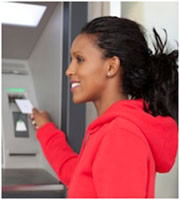A rising trend takes hold in credit card rates

July 15, 2012
Current averages:
- Average consumer credit card rates, overall market: 16.98 percent
- Average consumer non-rewards credit card rate: 15.15 percent
- Average consumer rewards credit card rate: 17.76 percent
- Average student credit card rate: 17.07 percent
- Average business non-rewards credit card rate: 14.74 percent
- Average business rewards credit card rate: 15.60 percent
In the first half of July, the U.S. bank prime rate continued to hold steady at 3.25 percent.
Consumer, student, and business credit cards were all affected by rate increases in recent weeks. To some extent, the rise in average credit card rates was due to changes in the types of credit card offers available. Still, to the extent that credit card companies replace low-rate cards with those charging a higher rate, it still represents an upward trend in rates for the overall market.
In most cases, the changes in average rates have been slight, but these increases are striking because they occur at a time when interest rates generally are continuing to fall. 30-year and 15-year mortgage rates, for example, reached new lows in the first half of July. Meanwhile, business rewards credit card rates rose in the most recent semi-monthly survey, and consumer and student credit cards have now seen rate increases in two consecutive surveys.
With the U.S. bank prime rate holding steady, and market rates continuing to fall, the rise in credit card rates is likely due to either or both of two factors:
- Growing concern about consumer creditworthiness in a weakening economy.
- Internal cost issues as credit card companies continue to come to terms with the impact of the CARD Act.
In any case, the recent trend towards higher rates bears watching. It makes this an especially important time to shop for credit card rates, because the rate increases have not occurred across the board. While some cards raised rates or were replaced by more expensive cards, other credit cards have held the line on rates and are still available to customers.
Consumer credit cards
As was the case in the last semi-monthly survey, the rise in consumer credit card rates occured in the non-rewards category, while consumer rewards credit cards held steady for the fifth consecutive survey.
Both consumer rewards and non-rewards credit card rates have risen so far this year, but the rise has been more pronounced in the non-rewards category. Those credit card offers have risen by 0.57 percent so far in 2012, while the average consumer rewards credit card rate has risen by 0.22 percent.
As a result of these changes, the spread between consumer rewards and non-rewards rates has narrowed by 0.35 percent this year, with over a third of that occuring in the past month. A narrowing of this spread reduces the potential cost of rewards programs, on a relative basis.
Student credit cards
The average student credit card offer may have increased for the second consecutive survey, but unlike consumer credit cards, student credit credit cards have not changed much overall during 2012. With an average rate of 17.07 percent, they have increased by a grand total of just one basis point over the year so far.
Business credit cards
With an increase of 0.20 percent to 15.60 percent, the average rate for business rewards credit cards is now slightly higher than it was at the start of the year (15.53 percent). Remarkably, business non-rewards credit card rates have been unchanged for all of 2012.
Good credit vs. average credit
Despite changes in some credit card offers, the spread between average rates for customers with top credit ratings and those with mediocre credit remained unchanged, at 4.02 percent.
In total, IndexCreditCards.com surveys information from some 50 different credit cards, and includes multiple credit-rating tiers from many of those cards. Examples of offers surveyed include American Express credit cards, Capital One, Chase, Citi, Discover, and other MasterCard and Visa branded cards. The information compiled not only demonstrates trends in credit card rates over time, but also indicates the different values credit card companies put on different target markets (consumer, business, etc.), as evidenced by the differences between rates for those markets.
Disclaimer:The information in this article is believed to be accurate as of the date it was written. Please keep in mind that credit card offers change frequently. Therefore, we cannot guarantee the accuracy of the information in this article. Reasonable efforts are made to maintain accurate information. See the online credit card application for full terms and conditions on offers and rewards. Please verify all terms and conditions of any credit card prior to applying.
This content is not provided by any company mentioned in this article. Any opinions, analyses, reviews or recommendations expressed here are those of the author’s alone, and have not been reviewed, approved or otherwise endorsed by any such company. CardRatings.com does not review every company or every offer available on the market.
Published